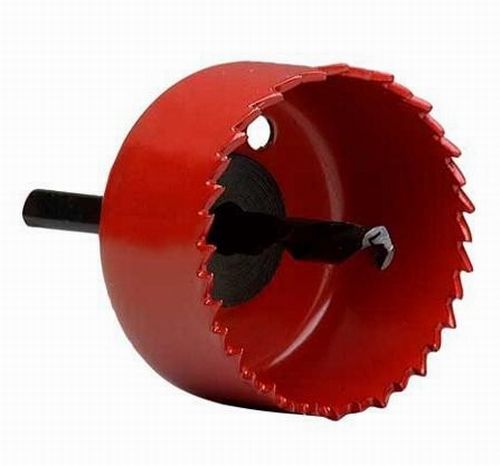I'll second the jigsaw method. A jigsaw will not give you as clean and uniform hole as a hole saw, but the cost of a large hole saw, coupled with the difficulty in using it, always drives me to use a jigsaw for holes much over 2 inches. When using a hole saw to cut 2 & 1/8 inch round holes for door handles in wood doors I find the hole saw binds a lot. Trying to cut a 4 to 6 inch hole with a hole saw would be even tougher. Like Jr says above, mark the hole on the wood, drill a small hole inside the circle for the jigsaw blade and cut the hole from there. If you're real good with a jigsaw you can plunge cut and not drill a hole. If you haven't started a plunge cut you will break a few blades learning how.
If you choose to use a hole saw go slow and watch you alignment so the hole saw doesn't bind. Use a higher amperage drill as the larger blade will need the extra amps. If the blade is spinning in the hole without making very much sawdust, the blade will heat quickly, so watch for that. Cutting a larger hole will be an adventure as the drill will buck harder when the saw binds due to the larger moment arm caused from the large hole size.
BTW, if you have friends that do drywall they might have a large hole saw you could borrow. Drywall is one of the few exceptions where a hole saw works well because of the softer material. Drywallers use these for installing down lights in the ceiling.
Good luck!

